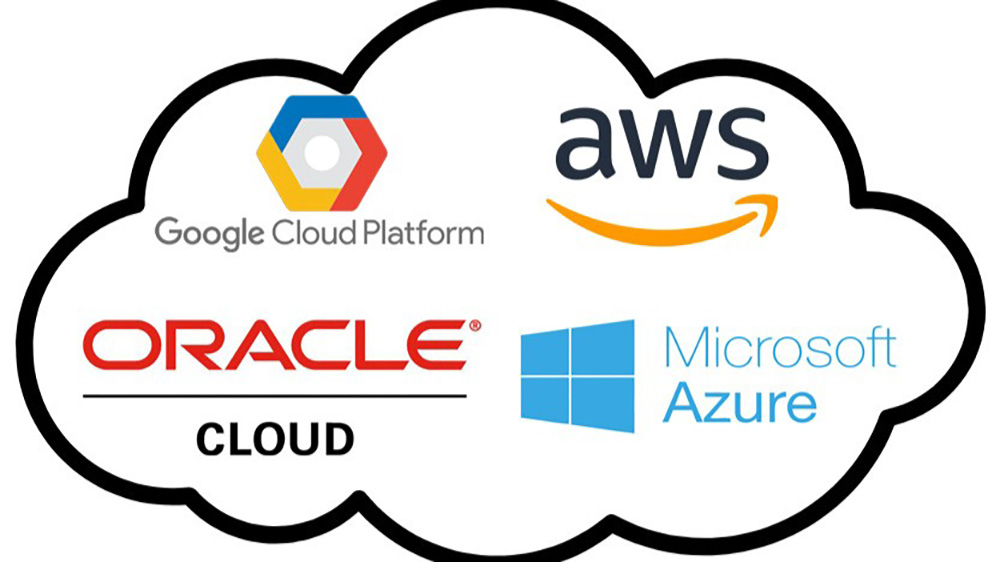As digital transformation accelerates, enterprises are increasingly leveraging multicloud infrastructure to drive innovation, optimize performance, and ensure security. Multicloud strategies involve utilizing multiple cloud providers such as Amazon Web Services (AWS), Microsoft Azure, Google Cloud Platform (GCP), and Oracle Cloud Infrastructure (OCI). This approach empowers businesses to distribute workloads across various platforms, enhancing flexibility while reducing the risks associated with vendor lock-in.
Recent strategic collaborations between AWS, Azure, GCP, and OCI have fostered improved interoperability, enabling organizations to seamlessly integrate services and optimize cloud-based operations. As enterprises expand their IT capabilities, the demand for multicloud strategies continues to grow, positioning cloud computing as a critical enabler of digital transformation in the global economy.
The Strategic Advantages of Multicloud Infrastructure
Multicloud infrastructure offers enterprises a wealth of advantages. By leveraging multiple cloud service providers, organizations can capitalize on best-in-class services while mitigating potential drawbacks. Some of the most significant benefits include:
- Enhanced Flexibility and Scalability: Businesses can design custom cloud solutions based on workload requirements. This ensures that applications run efficiently without unnecessary expenses.
- Robust Security and Compliance: Using a diversified cloud strategy allows companies to employ advanced security features from various providers, thereby enhancing cybersecurity and compliance efforts.
- Cost Optimization: Organizations can distribute workloads across different providers, reducing overreliance on a single vendor and controlling costs through price-based decision-making.
- Business Continuity and Disaster Recovery: A well-structured multicloud strategy ensures uninterrupted services even if one provider experiences an outage. This redundancy reduces downtime and enhances business resilience.
- Improved Performance and Reduced Latency: By deploying applications closer to end-users through geographically dispersed cloud providers, organizations can improve speed and responsiveness, creating a seamless user experience.
How Multicloud Drives Economic Growth and Innovation in the U.S.
The adoption of multicloud infrastructure is playing a crucial role in driving economic growth, innovation, and competitiveness in the United States. Its financial impact is evident in multiple ways:
- Increased IT Spending and Investment: Multicloud solutions have fueled substantial investments in cloud technologies, contributing billions of dollars to the U.S. economy annually. Organizations are allocating larger portions of their IT budgets to cloud infrastructure, software, and cybersecurity solutions.
- Operational Cost Savings for Businesses: Companies leveraging multicloud environments optimize resource utilization, reducing unnecessary expenses associated with over-provisioning. Cost-effective cloud management strategies result in substantial savings in operational expenditures.
- Job Creation and Workforce Development: The expansion of multicloud services has generated thousands of high-paying jobs in cloud engineering, AI development, cybersecurity, and IT consulting. These jobs contribute to the overall growth of the technology sector and strengthen the U.S. labor market.
- Infrastructure Expansion and Technological Leadership: The demand for multicloud services is driving investments in data centers, high-speed networking, and advanced computing hardware, bolstering the U.S. IT sector and maintaining the country’s leadership in global cloud innovation.
- Strengthening National Security: A diversified multicloud environment enhances the cybersecurity posture of government agencies and private enterprises, reducing the risk of large-scale cyberattacks.
- Advancing Innovation in Emerging Technologies: The integration of multicloud infrastructure with AI, machine learning, and edge computing is propelling advancements in automation, smart cities, and Internet of Things (IoT) applications.
- Enhancing Business Competitiveness: By enabling companies to optimize their IT infrastructure efficiently, multicloud strategies position U.S. enterprises at the forefront of digital transformation, increasing global competitiveness and economic resilience.
Overcoming Challenges in Multicloud Adoption
While multicloud infrastructure offers numerous benefits, its implementation is not without challenges. Some of the primary obstacles include:
- Complex Cloud Management: Coordinating resources across multiple cloud environments requires robust orchestration tools and expertise in cloud integration.
- Interoperability Barriers: Ensuring seamless interaction between different cloud platforms can be difficult, necessitating the use of standardized APIs and cross-platform compatibility solutions.
- Security Considerations: Protecting sensitive data across multiple cloud environments demands a proactive approach to security, including encryption, identity access management, and real-time threat monitoring.
- Skills Gap and Workforce Training: Organizations must invest in ongoing employee training to keep IT teams proficient in managing diverse cloud environments effectively.
- Regulatory Compliance: With differing regulations across industries and geographies, businesses must ensure they meet compliance requirements while maintaining cloud flexibility.
Best Practices for Multicloud Strategy Implementation
To maximize the benefits of multicloud adoption, organizations should adhere to the following best practices:
- Develop a Comprehensive Cloud Strategy: Clearly define business objectives and determine the ideal mix of cloud providers to align with company goals.
- Leverage Cloud-Native Technologies: Utilize containerization, microservices, and serverless computing to enhance application portability and interoperability.
- Implement Robust Security Protocols: Adopt a zero-trust security framework, employ encryption, and integrate AI-driven security analytics to proactively detect and mitigate threats.
- Automate Cloud Management: Utilize AI-powered cloud orchestration tools to streamline operations, reduce human error, and improve cost efficiency.
- Continuously Monitor and Optimize Cloud Usage: Conduct regular performance evaluations, track cloud expenditures, and adjust strategies to maximize efficiency and return on investment.
- Foster Collaboration Among Cloud Providers: Encouraging interoperability between cloud service providers can help businesses create more seamless integrations and optimize resource utilization.
The Future of Multicloud Computing
The adoption of multicloud infrastructure is set to grow significantly as more enterprises recognize its potential. As AI-driven automation, edge computing, and 5G connectivity continue to evolve, multicloud strategies will become even more integral to business success. Some of the key developments anticipated in the near future include:
- Greater Collaboration Among Cloud Providers: Industry leaders such as AWS, Azure, GCP, and OCI are expected to strengthen partnerships, improving interoperability and enabling businesses to create more seamless, integrated cloud environments.
- Expansion of AI and Machine Learning Capabilities: AI-driven automation will play a critical role in optimizing cloud infrastructure, reducing operational costs, and enhancing data security.
- Edge Computing and IoT Growth: As IoT applications expand, edge computing will work alongside multicloud strategies to support real-time data processing and decision-making.
- Improved Cloud Governance and Regulatory Compliance: Enterprises will prioritize compliance management solutions to meet evolving regulatory standards while maintaining secure cloud operations.
- Increased Adoption of Hybrid Cloud Models: Businesses will combine private and public cloud solutions to create more tailored, scalable IT environments that align with industry-specific requirements.
- More Sustainable Cloud Solutions: As sustainability concerns rise, multicloud strategies will incorporate energy-efficient cloud computing models to reduce environmental impact.
For organizations looking to stay competitive in an increasingly digital world, adopting a strategic multicloud approach is no longer optional—it is imperative. By leveraging multiple cloud providers, businesses can unlock new opportunities for innovation, security, and operational efficiency, positioning themselves for long-term success in the rapidly evolving IT landscape.






